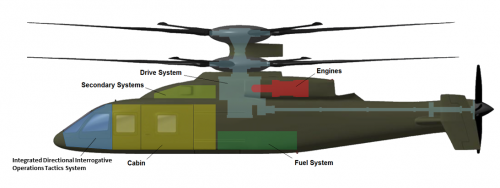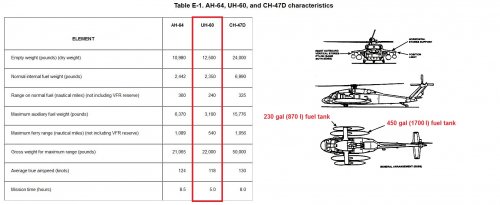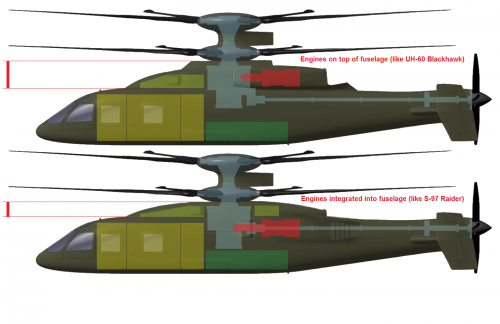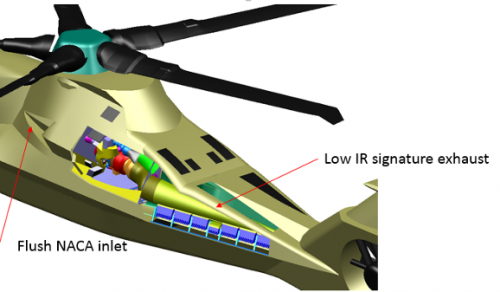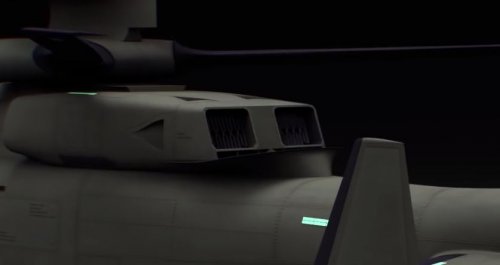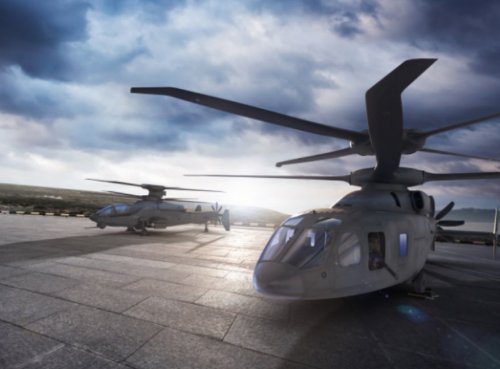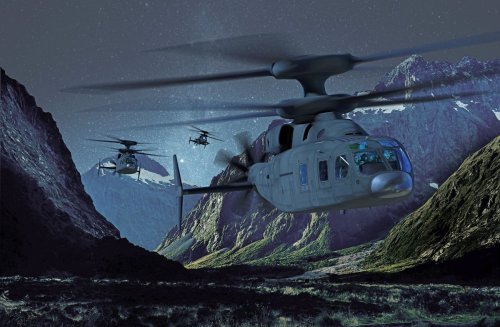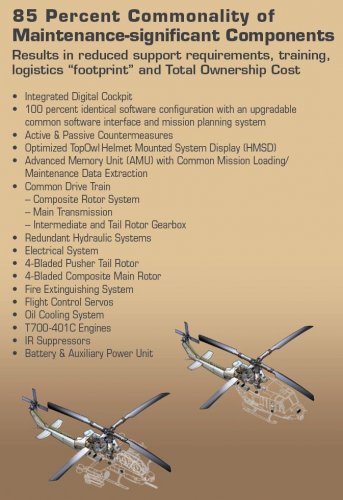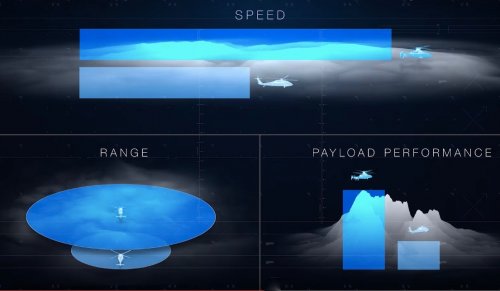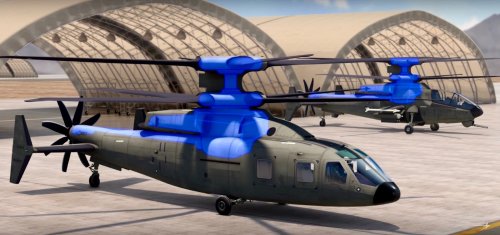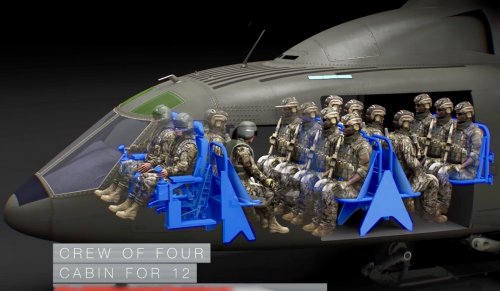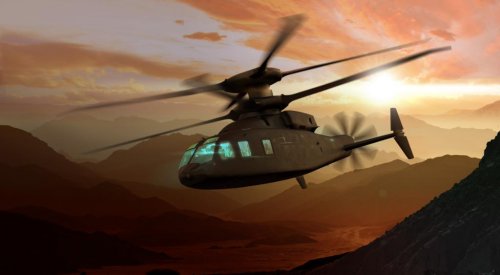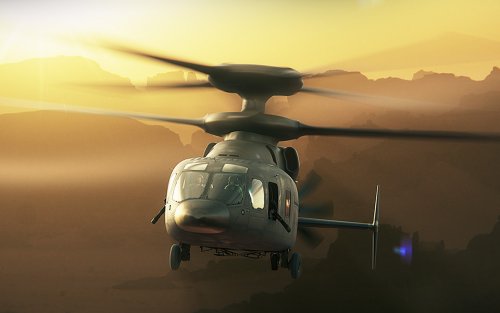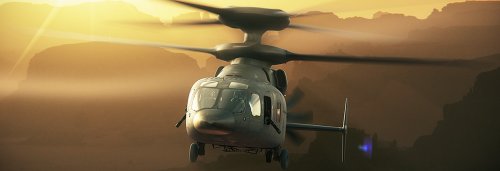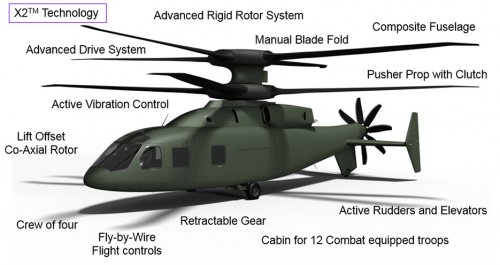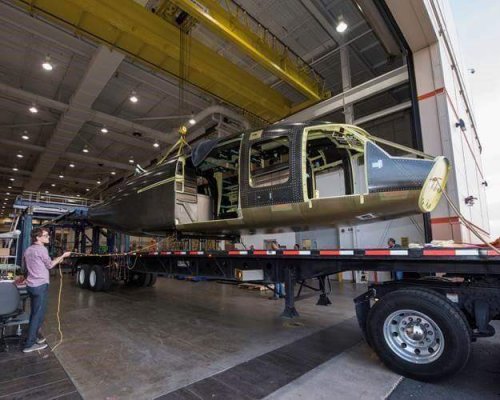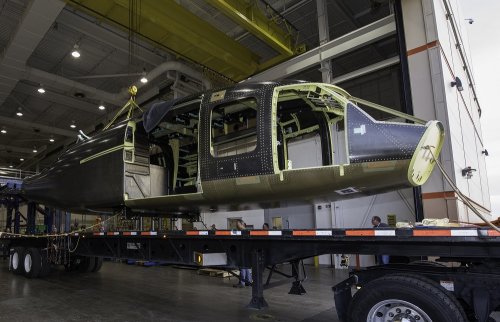You are using an out of date browser. It may not display this or other websites correctly.
You should upgrade or use an alternative browser.
You should upgrade or use an alternative browser.
Boeing-Sikorsky SB>1 Defiant (Model S-100)
- Joined
- 24 November 2008
- Messages
- 1,550
- Reaction score
- 2,617
Orphic said:Relative to power, weight, speed and drag, if a UH-60L equaled a value of 1.000, a CH-47F would be 2.504, the SB-1 would be 0.541 and the S-97 would be 0.336, pretty nice improvements in efficiency.
Can you elaborate where those numbers come from?
Published on Oct 17, 2016
Experimental Test Pilot Frank Conway talk about the SB "greater than" 1 DEFIANT and the Future Vertical Lift Programme.
https://youtu.be/xh7F3PvqOl0
Experimental Test Pilot Frank Conway talk about the SB "greater than" 1 DEFIANT and the Future Vertical Lift Programme.
https://youtu.be/xh7F3PvqOl0
- Joined
- 24 November 2008
- Messages
- 1,550
- Reaction score
- 2,617
- Joined
- 24 November 2008
- Messages
- 1,550
- Reaction score
- 2,617
- Joined
- 24 November 2008
- Messages
- 1,550
- Reaction score
- 2,617
In regards of internal fuel capacity and self deployment capability . Source: http://www.globalsecurity.org/military/library/policy/army/fm/1-111/app-e.htm
Attachments
- Joined
- 18 October 2006
- Messages
- 4,213
- Reaction score
- 4,924
118 knots cruise speed for an H-60 in the full self deploy configuration is a tad optimistic. Rolling take-off required and the first two hours you will be lucky to get 80 knots with a very slow climb out. Until you burn off some of the fuel, power management is critical. Never did this myself, but had opportunity to talk with crew who did. I suspect the SB>1 would rely on filling the troop compartment with fuel tanks for the deployment, vice external tanks. Assuming the Army keeps the air refuel requirement, taking off at max gross weight with fuel may not be a necessity for self deployment.
- Joined
- 24 November 2008
- Messages
- 1,550
- Reaction score
- 2,617
yasotay said:118 knots cruise speed for an H-60 in the full self deploy configuration is a tad optimistic. Rolling take-off required and the first two hours you will be lucky to get 80 knots with a very slow climb out. Until you burn off some of the fuel, power management is critical. Never did this myself, but had opportunity to talk with crew who did. I suspect the SB>1 would rely on filling the troop compartment with fuel tanks for the deployment, vice external tanks. Assuming the Army keeps the air refuel requirement, taking off at max gross weight with fuel may not be a necessity for self deployment.
Thx for the info, yasotay!
...I just noticed that the auxiliary fuel weight given in the table (3100 lb) would correspond to a 2x 230 gal fuel tank configuration (~0.8 kg/l). The 118 kts might be only valid for this config. Strange that the table says MAXIMUM auxiliary fuel weight ???
...another note: The internal fuel weight of UH-60 is 2350 lb (1066 kg) = 349 gal (1320 l). That corresponds to a box of 2m x 1m x 0.66m. Even twice the internal fuel would easily fit in SB>1's belly. That's why I was wondering what all the volume underneath the gearbox is used for.
Respectively there would be plenty of space to integrate the engines into the fuselage, lateral of the gearbox, as well.
Is there any military certification requirements that suggest the engines to be installed on top of the fuselage?
EDIT: I've attached a sketch to clarify my view
Attachments
- Joined
- 18 October 2006
- Messages
- 4,213
- Reaction score
- 4,924
There is of course certification requirements for darn near every aspect of rotorcraft design for the government.. I suspect that the engines are on top of the airframe for aerodynamic reasons, to reduce drag, since the requirement is to make a fast rotorcraft. I also imagine there might be a weight consideration. To Jeb's point about access, I think that either method will give you fairly easy access, given the primary engine hatch will likely support the weight of a maintainer or two. Arguments can be made both ways as to how much ease of access you get with either configuration. I suspect that the fuel is right where you put it as putting fuel directly under the occupants has been undesirable to the Army for a long time. Since Sikorsky has put fuel aft in UH-60 to good effect, I imagine they are going to continue with a good thing. Having all that weight in line with the CG is probably a good thing to start a mission with. Although returning with a cabin full of troops and equipment and a light fuel load probably will require some extra work on the part of the elevators.
- Joined
- 24 November 2008
- Messages
- 1,550
- Reaction score
- 2,617
Jeb said:Engine access for field maintainability?
Same applies for RAH-66 and S-97
Attachments
- Joined
- 24 November 2008
- Messages
- 1,550
- Reaction score
- 2,617
yasotay said:...I suspect that the engines are on top of the airframe for aerodynamic reasons, to reduce drag, since the requirement is to make a fast rotorcraft...
- Joined
- 18 October 2006
- Messages
- 4,213
- Reaction score
- 4,924
VTOLicious said:yasotay said:...I suspect that the engines are on top of the airframe for aerodynamic reasons, to reduce drag, since the requirement is to make a fast rotorcraft...
I think the opposite is the case. Integrated engines would reduce overall height, frontal area and aerodynamic drag.
Perhaps you are right. Perhaps Sikorsky will have integrated engines on top of the aircraft
VTOLicious said:Jeb said:Engine access for field maintainability?
Same applies for RAH-66 and S-97
The RAH-66 that got cancelled?
- Joined
- 24 November 2008
- Messages
- 1,550
- Reaction score
- 2,617
yasotay said:VTOLicious said:yasotay said:...I suspect that the engines are on top of the airframe for aerodynamic reasons, to reduce drag, since the requirement is to make a fast rotorcraft...
I think the opposite is the case. Integrated engines would reduce overall height, frontal area and aerodynamic drag.
Perhaps you are right. Perhaps Sikorsky will have integrated engines on top of the aircraftI suspect that Sikorsky has spent a lot of time optimizing the airflow to minimize drag regardless of where the engines are.
It just came to my mind that there might be another reason:
As far as I remember the Westland G-LYNX had a special engine nozzle design to increase maximum speed. It can be assumed that the two T-55 engine will output a significant amount of thrust in cruise flight. When we look at the SB>1 pics we can see that the nozzles are very well placed to allow such a thrust augmentation.
Btw, the G-LYNX still holds the official speed record for conventional helicopters (216 kts)
Attachments
- Joined
- 18 October 2006
- Messages
- 4,213
- Reaction score
- 4,924
VTOLicious said:yasotay said:VTOLicious said:yasotay said:...I suspect that the engines are on top of the airframe for aerodynamic reasons, to reduce drag, since the requirement is to make a fast rotorcraft...
I think the opposite is the case. Integrated engines would reduce overall height, frontal area and aerodynamic drag.
Perhaps you are right. Perhaps Sikorsky will have integrated engines on top of the aircraftI suspect that Sikorsky has spent a lot of time optimizing the airflow to minimize drag regardless of where the engines are.
Btw, the G-LYNX still holds the official speed record for conventional helicopters (216 kts)
I thought the Russians had just last year gone faster with the High Speed Test Bed based on an Mi-24 with new rotors? Not official yet?
- Joined
- 4 July 2010
- Messages
- 2,516
- Reaction score
- 3,100
Still unofficial until independently verified, nobody's giving Russian news sources the benefit of the doubt these days. Well, almost nobody.yasotay said:VTOLicious said:yasotay said:VTOLicious said:yasotay said:...I suspect that the engines are on top of the airframe for aerodynamic reasons, to reduce drag, since the requirement is to make a fast rotorcraft...
I think the opposite is the case. Integrated engines would reduce overall height, frontal area and aerodynamic drag.
Perhaps you are right. Perhaps Sikorsky will have integrated engines on top of the aircraftI suspect that Sikorsky has spent a lot of time optimizing the airflow to minimize drag regardless of where the engines are.
Btw, the G-LYNX still holds the official speed record for conventional helicopters (216 kts)
I thought the Russians had just last year gone faster with the High Speed Test Bed based on an Mi-24 with new rotors? Not official yet?
Defiant delayed: Joint Multi Role demonstrator won’t fly in 2017
By: Jen Judson, April 19, 2017
Source:
http://www.defensenews.com/articles/defiant-delayed-joint-multi-role-demonstrator-wont-fly-in-2017
By: Jen Judson, April 19, 2017
Source:
http://www.defensenews.com/articles/defiant-delayed-joint-multi-role-demonstrator-wont-fly-in-2017
WASHINGTON – The Army has been planning for two vertical lift aircraft to begin flight demonstrations in the fall of 2017 critical to the process of informing and shaping the design of a Future Vertical Lift helicopter fleet expected to come online in the 2030s.
But one of the demonstrators – the Sikorsky-Boeing-made SB-1 Defiant coaxial helicopter – is now slated to start flying some time in the first half of 2018, behind the original schedule.
Bell Helicopter has been very vocal about its own demonstrator – the V-280 Valor tiltrotor – and recently said the aircraft is roughly 95 percent complete. The company said it will be ready to fly on schedule in the fall of 2017, but also believes the Army, given the technology on display now, could start building a new aircraft by 2020.
While Defiant may start its flight test phase later, the Boeing and Sikorsky team believes it’s following “a very disciplined approach,” according to Pat Donnelly, Defiant program manager at Boeing.
The delay seems to be a relatively new development. In December, the Boeing-Sikorsky team told Defense News in an interview that it was anticipating flying on time.
“Honestly, there’s nothing significant that happened that caused a delay,” Donnelly told reporters during an April 18 teleconference. “There were no problems that we’ve encountered; it’s just a process as we’ve been following it. Things aren’t happening as quickly as we would like, but again there has been no negative elements going on, we are marching down the path, as we said.”
Donnelly added the Army and Marine Corps “fully understand where we are and fully support” the process “because, again, it is the belief that when we do fly we will have validated all of our components and, as such, we will be entering a much more risk-reduced flight test program.”
When pressed further on what was slowing the process, Donnelly said the focus of the team in developing Defiant has been on work in its systems integration lab and propulsion system test bed. He said the third leg of the development work is flying the aircraft. The process requires coordination across the three legs, as hardware is refined, for instance.
The team thinks it is possible to make up for lost time as it begins to fly the aircraft due to its thorough risk reduction process now, but Donnelly added, “we do recognize that our flight test program has probably a year duration. Certainly as we start to fly the aircraft, while we still have to expand an envelope and still have to prove all of the flight characteristics of this vehicle, we will be doing it with more confidence I think than we would be if we didn’t do all of this risk reduction beforehand.”
The Boeing-Sikorsky team also said the delay in flight schedule should not have a negative impact on the Army launching its FVL program within its planned timeline. The program is expected to become a full-fledged program-of-record in 2019.
Meanwhile, the Lockheed Martin-owned Sikorsky has made progress in its S-97 Raider helicopter program, which uses the same X2 coaxial technology as Defiant but on a smaller scale. Raider is a scaled-up version of its X2 demonstrator that broke unofficial helicopter cruise speed records in 2010.
The aircraft flew in March this year in a series of tests and Lockheed posted a video Tuesday of it in action. The Army considered Raider as an option when it was looking to procure an armed reconnaissance helicopter around 2012, but ultimately it opted not to procure a new helicopter for the mission.
Sikorksy has moved at lightning speed with Raider’s development. At the time the service was mulling a new armed scout, Raider was an aircraft just on paper.
The service originally intended to include the attack mission in its first variant of FVL that it calls “Capability Set 3,” but the Army is taking a step back to debate what it truly needs in an attack helicopter and where it fits in the family of future rotorcraft. The analysis of alternatives the service has begun for its first variant of FVL does not include examining the attack mission.
The Army will likely follow the development of capability set 3 with capability set 1 development – which is expected to address light attack – due to a current gap in the service’s light attack and reconnaissance helicopter fleet with the retirement of the OH-58D Kiowa Warrior helicopter.
In scaling up in size, moving from the X2 to Raider to Defiant, Sikorsky is increasing the weight of the platform from 6,000 lbs to 11,000 lbs to 30,000 lbs, Donnelly said.
When asked what the challenges might be in scaling the aircraft up in size and weight, Donnelly said, while loads on the rotor system increase with size, the task “doesn’t appear to be a challenge at this time.”
Dan Spoor, Sikorsky vice president told reporters in the small teleconference that using a currently fielded engine – the T-55 – puts some limitation on the aircraft and a future engine that would come along with FVL would match up well with what the team has designed and would bring it to its full potential.
"Defiant's first flight falls behind"
21 April, 2017 SOURCE: Flightglobal.com BY: Leigh Giangreco Washington DC
Source:
https://www.flightglobal.com/news/articles/defiants-first-flight-falls-behind-436400/
21 April, 2017 SOURCE: Flightglobal.com BY: Leigh Giangreco Washington DC
Source:
https://www.flightglobal.com/news/articles/defiants-first-flight-falls-behind-436400/
Sikorsky-Boeing’s SB-1 Defiant has fallen months behind its scheduled first flight in the US Army’s Joint Multi-Role Technology Demonstration (JMR-TD), even as Bell Helicopter’s V-280 Valor marches toward its first flight in September.
The army’s JMR-TD serves as the precursor to the service’s Future Vertical Lift competition, which will replace the UH-60 Black Hawk, AH-64 Apache and CH-47 Chinook. Sikorsky-Boeing is pushing its coaxial rotor-pusher propeller Defiant. The Valor offers a tiltrotor that resembles an improved V-22 Osprey.
The Defiant was expected to fly this fall, but Boeing has pushed first flight until early 2018. The company did not encounter a significant issue that caused the delay, says Boeing’s Defiant programme manager, Pat Donnelly.
“Things aren’t happening as quickly as we would like,” he says. “Again there have been no negative elements going on, we’re marching down the path, we have stayed lockstep with our customer and they fully understand where we are.”
Rather than pitch its first flight as delayed, Boeing is couching Defiant’s premier as a less risky effort. Boeing could still play catch up to its original timeline but isn’t counting on that right now, Donnelly says.
“We do recognize that our flight test program probably has a year duration,” he says. “Certainly as we start to fly the aircraft while we still have to expand the envelope and approve all of the flight characteristics of this vehicle. We will be doing it with more confidence than you would be if you didn’t do all of this risk reduction effort beforehand.”
Boeing is continuing to procure main fuselage bodies for the Defiant even as the programme is in the midst of wind tunnel testing. The testing doesn’t inform Defiant’s design so much as help Boeing understand the helicopter’s rotor interactions and other elements that are difficult to predict with current modeling, Donnelly says.
“Collectively with the army [we’re] looking at the computational fluid dynamic tools that exist today and how we refine them to better model the way our configuration operates,” he says. “It was really just to help us...as we do more predictions on what more future vertical lifts may happen to look like.”
As Sikorsky pursues JMR-TD, it’s continuing work on its smaller coaxial S-97 Raider. The helicopter both matures technology from its X2 demonstrator and could serve one of FVL’s capabbility sets, particularly if the army finds a need for a light variant, says Sikorsky’s vice president, Dan Spoor. The helicopter flew at 150kt, without the rear prop engaged, and is preparing for a 220kt flight in the second quarter to prove an FVL capability, Spoor says.
- Joined
- 18 October 2006
- Messages
- 4,213
- Reaction score
- 4,924
When you only produce one whole cloth new military rotorcraft every quarter century, you are going to run into challenges. With all of the sub-vendors the primes are using, I imagine there is even more opportunity for delay in the plan. I am surprised that the news was released just before the big Army Aviation conference next week.
- Joined
- 24 November 2008
- Messages
- 1,550
- Reaction score
- 2,617
Triton said:"Defiant's first flight falls behind"
21 April, 2017 SOURCE: Flightglobal.com BY: Leigh Giangreco Washington DC
Source:
https://www.flightglobal.com/news/articles/defiants-first-flight-falls-behind-436400/
"Boeing is continuing to procure main fuselage bodies for the Defiant even as the programme is in the midst of wind tunnel testing."
Funny approach :
- Joined
- 18 October 2006
- Messages
- 4,213
- Reaction score
- 4,924
We must remember that both SB>1 and V-280 are technology demonstrators. SB>1 is building on data from three flying prototypes. The wind tunnel work is in the CFD arena to better understand all of the air flows for a high speed coaxial compound. I imagine that Bell is also contiuning to do wind tunnel work.
Source:
http://angkasa.grid.id/info/militer/sb1-defiant-hybrid-heli-angkut-dan-serang/
https://business-insider-uk-yahoopartner.tumblr.com/post/159530193375/heres-a-look-at-boeing-and-sikorskys-new-gunship
https://jamesdrewnews.com/2016/12/11/the-war-report-vol-3-dec-12-2016/
http://www.thedrive.com/the-war-zone/9198/sikorsky-and-boeing-give-us-a-glimpse-of-their-new-attack-helicopter-concept
https://www.shephardmedia.com/news/rotorhub/quad-defiant-name/
https://www.defensetech.org/2017/04/12/lockheed-touts-coaxial-attack-helo/
http://angkasa.grid.id/info/militer/sb1-defiant-hybrid-heli-angkut-dan-serang/
https://business-insider-uk-yahoopartner.tumblr.com/post/159530193375/heres-a-look-at-boeing-and-sikorskys-new-gunship
https://jamesdrewnews.com/2016/12/11/the-war-report-vol-3-dec-12-2016/
http://www.thedrive.com/the-war-zone/9198/sikorsky-and-boeing-give-us-a-glimpse-of-their-new-attack-helicopter-concept
https://www.shephardmedia.com/news/rotorhub/quad-defiant-name/
https://www.defensetech.org/2017/04/12/lockheed-touts-coaxial-attack-helo/
Attachments
-
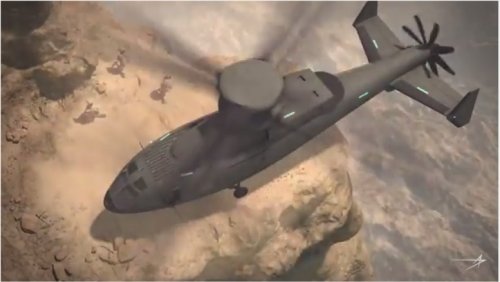 SB1-attack-variant-777x437.jpg63.3 KB · Views: 140
SB1-attack-variant-777x437.jpg63.3 KB · Views: 140 -
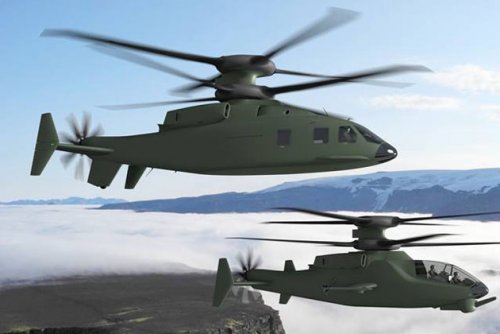 sikorsky-boeing-sb-1-defiant-fvl-us-army.jpg56.4 KB · Views: 161
sikorsky-boeing-sb-1-defiant-fvl-us-army.jpg56.4 KB · Views: 161 -
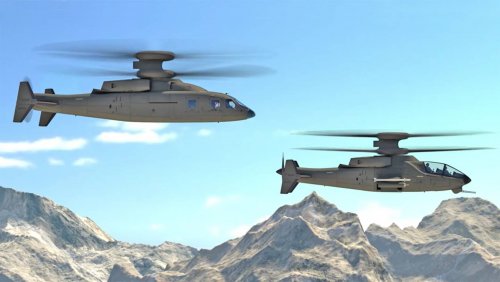 imagesvc.timeincapp.com.jpeg91.2 KB · Views: 146
imagesvc.timeincapp.com.jpeg91.2 KB · Views: 146 -
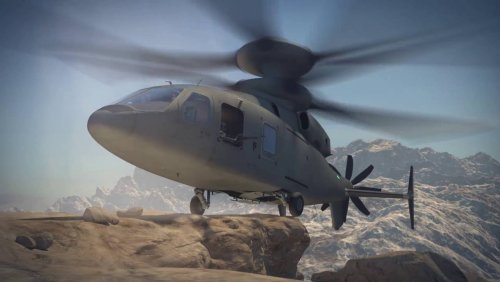 maxresdefault.jpg68.8 KB · Views: 160
maxresdefault.jpg68.8 KB · Views: 160 -
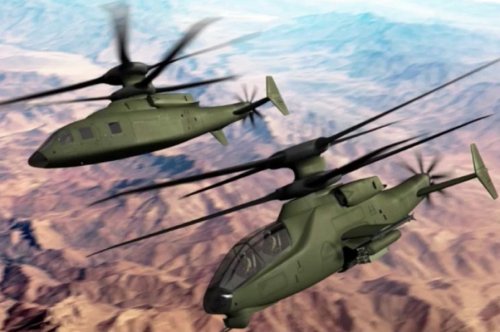 sikorsky-sb-1-defiant-dec-2016.jpg281.5 KB · Views: 595
sikorsky-sb-1-defiant-dec-2016.jpg281.5 KB · Views: 595 -
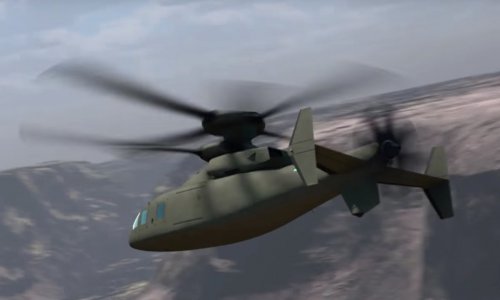 tumblr_inline_oocv93RAVw1tm6qm5_1280.jpg50.3 KB · Views: 588
tumblr_inline_oocv93RAVw1tm6qm5_1280.jpg50.3 KB · Views: 588 -
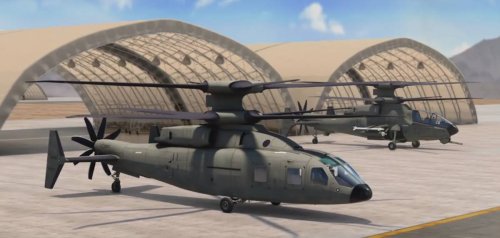 message-editor2F1491932600419-fvl-gunship-3.jpg67.2 KB · Views: 663
message-editor2F1491932600419-fvl-gunship-3.jpg67.2 KB · Views: 663
- Joined
- 24 November 2008
- Messages
- 1,550
- Reaction score
- 2,617
"Defiant’s delay due to blade manufacturing challenges"
by Jen Judson
September 11, 2017
Source:
http://www.defensenews.com/digital-show-dailies/dsei/2017/09/11/defiants-delay-due-to-blade-manufacturing-challenges/
by Jen Judson
September 11, 2017
Source:
http://www.defensenews.com/digital-show-dailies/dsei/2017/09/11/defiants-delay-due-to-blade-manufacturing-challenges/
LONDON — The SB-1 Defiant Joint Multi-Role demonstrator aircraft’s delay for first flight can be attributed to challenges in manufacturing its complex rotor blades for the helicopter’s coaxial design, the U.S. Army’s JMR program manager told Defense News at DSEI, a defense conference in London, on Monday.
“The challenge has been the manufacturing of the blades, which is an interesting challenge,” Dan Bailey said. “Some people would think that’s not technology but actually it is.”
The Sikorsky-Boeing team building the demonstrator for the U.S. Army announced it would not fly in 2017 as planned due unspecified problems.
Defiant is one of two demonstrators that will fly as part of the JMR program demonstration that will help define and build requirements for the Army’s Future Vertical Lift program of record expected to launch in roughly the 2019 timeframe. Bell Helicopter is building the second demonstrator – a tiltrotor design called the V-280 Valor. That aircraft will fly in roughly 20 to 30 days, according to Bailey.
One of the efforts underway by the Sikorsky and Boeing team for the JMR program is to design a future program that would make the aircraft more affordable. One way of doing that is to move from having people build the rotor blades to having machines that can handle the complex task.
To achieve the proper aerodynamics for a rotor blade, it “requires some very laborious-type manufacturing,” Bailey said. “They are done in a manner that is multi-sheets of composite material and they have to be laid up in certain patterns, certain directions, for strength properties and they do that pretty much today with people.”
The team instead decided to build the rotor blades with a process that uses a machine that lays up the material as it goes, Bailey said.
“The challenge with that is you have to have a tool that allows you to lay up that material,” he added, which is “a long, tube-like configuration and that machine lays up the composite material around it,” to create a rotor blade spar, the main structural part of the blade, Bailey explained.
The tool has to be “a fairly long piece of tool, it can’t have any sag, it has to be very dimensionally specific and structured and that has been a challenge,” Bailey said.
The team started with one type of material to build the tool and then switched to a different material. This alteration ultimately caused the delay.
“The good news about that is we have completely removed that risk,” Bailey said, because it is going to be the same process the team would use to build rotor blades in a program of record.
The team has built two spars using the new tool and the problem seems to be resolved, Bailey said.
Defiant is still on track to fly in the spring or early summer timeframe, Bailey said, but added that the time associated with building all the rotor blades for the demonstrator is about 10 months behind.
"Flying" The SB1 Defiant
Published on Oct 10, 2017
https://youtu.be/qhi9DcyJDww
Published on Oct 10, 2017
https://youtu.be/qhi9DcyJDww
Boeing's Moran on Helo Programs, Sikorsky Partnership and Precision Strike
Published on Oct 10, 2017
Jamey Moran, a retired US Army brigadier general who is the vice president for Army systems at Boeing's Washington Office, discusses the company's helicopter efforts, its partnership with Sikorsky that is now part of Lockheed Martin, precision strike systems and more during an Oct. 9, 2017, interview at the Association of the United States Army's annual meeting in Washington. The Defense & Aerospace Report's coverage of the 2017 AUSA gathering is sponsored by AM General, Elbit Systems of America, General Motors HydroTec, L3 Technologies and Leonardo DRS.
https://youtu.be/aBr77enzq2w
Published on Oct 10, 2017
Jamey Moran, a retired US Army brigadier general who is the vice president for Army systems at Boeing's Washington Office, discusses the company's helicopter efforts, its partnership with Sikorsky that is now part of Lockheed Martin, precision strike systems and more during an Oct. 9, 2017, interview at the Association of the United States Army's annual meeting in Washington. The Defense & Aerospace Report's coverage of the 2017 AUSA gathering is sponsored by AM General, Elbit Systems of America, General Motors HydroTec, L3 Technologies and Leonardo DRS.
https://youtu.be/aBr77enzq2w
Source:
http://www.boeing.com/defense/future-vertical-lift/
http://www.boeing.com/defense/future-vertical-lift/
Overview
Preparing the way forward
The Future Vertical Lift (FVL) program, led by the U.S. Army with joint service participation, is expected to replace the entire U.S. military helicopter fleet beginning in the 2030s. The program focuses on developing the capabilities critical for multi-mission success across the services.
The U.S. government is expected to release their first Request for Proposal for a medium-class helicopter (Capability Set 3) in 2019. And Boeing and partner Sikorsky Aircraft, a Lockheed Martin Company, stand ready to lead the way.
As a precursor for FVL, the U.S. Army Aviation and Missile Research, Development and Engineering Center (AMRDEC) selected two industry partners to build and fly a medium-class, joint multi-role technology demonstrator. As industry leaders with rich traditions of performance and expertise on proven, established programs, Boeing and Sikorsky’s partnership will deliver unmatched capabilities and commitment toward future medium-class helicopters.
SB>1 DEFIANT™ leads the way
Together Boeing and Sikorsky are working with AMRDEC on the SB>1 DEFIANT™ technology demonstrator. Integrating revolutionary technology, the demonstrator provides:
X2 the speed and distance of conventional helicopters/today’s helicopters
Unparalleled agility and maneuverability
A step-function reduction in operation and sustainment costs
Critical risk reduction to scale and tailor a helicopter sized to meet our customers’ needs
Timeline
2013 – Sikorsky and Boeing Partnership
2014 – SB>1 DEFIANT™ receives JMR TD Contract
2016 - SB>1 DEFIANT™ Critical Design Release
2018 – SB>1 DEFIANT™ first flight
2019 – Expected FVL Capability Set 3 Technical Maturation and Risk Reduction RFP released
2025 – Expected FVL-Capability Set 3 Engineering Manufacturing and Development contract award
Videos
Advanced Capabilities
Customer
Dating back 55 years, Boeing has developed strong rotorcraft partnerships with the U.S. Army, Marines and Air Force as well as more than 20 global customers. Together, Boeing and our customers have developed the world’s most advanced helicopters to accomplish the most challenging missions, like the AH-64 Apache, V-22 Osprey and CH-47 Chinook.
As part of FVL, Boeing is working with those customers to determine the revolutionary capabilities critical toward successful missions in the future.
The U.S. Army and Marines have expressed interest in beginning the FVL program with a medium-class, assault helicopter, which would replace more than 2,000 helicopters beginning in the 2030s. As a precursor, the Sikorsky-Boeing team has partnered with AMRDEC to build and fly the SB>1 DEFIANT™ joint multi-role technology demonstrator.
Copyright © 1995 - 2018 Boeing. All Rights Reserved.
Sikorsky - Boeing Future Vertical Lift: The Way Forward
https://youtu.be/yuStvGT1aFA
Published on Apr 10, 2017
Sikorsky - Boeing Future Vertical Lift is a scalable design based on proven X2 Technology™. Designed for long range, high speed, superior hover performance and unmatched maneuverability, the Future Vertical Lift program will shape the U.S. military’s helicopter fleet of the future
https://youtu.be/yuStvGT1aFA
- Joined
- 24 November 2008
- Messages
- 1,550
- Reaction score
- 2,617
- Joined
- 18 October 2006
- Messages
- 4,213
- Reaction score
- 4,924
sferrin said:They appear to be WAYYYY behind Bell.
I think you overstate the situation. Just because they have no dynamic components, electronics, engines on the aircraft doesn't make them WAY x 4 behind Bell! Flying aircraft is not everything you know. B)
Similar threads
-
-
-
Boeing XP-12A (Model 101) fighter (1929)
- Started by Triton
- Replies: 0
-
Martin XB-16 and XB-16A bomber projects (Model 145)
- Started by Stargazer
- Replies: 66
-
The mystery surrounding the J-10’s powerplant – WS-10 or AL-31FN ???
- Started by Deino
- Replies: 17


